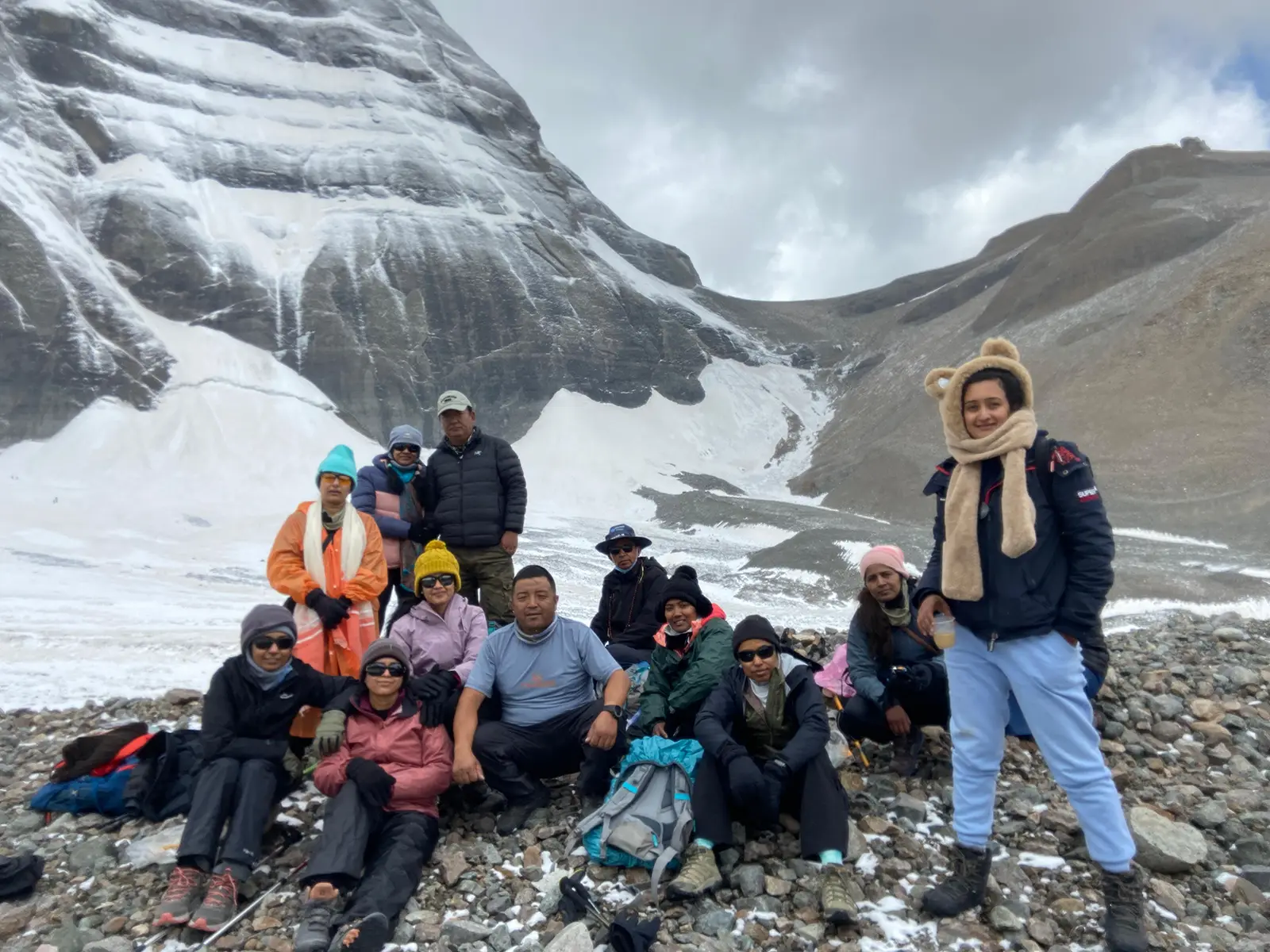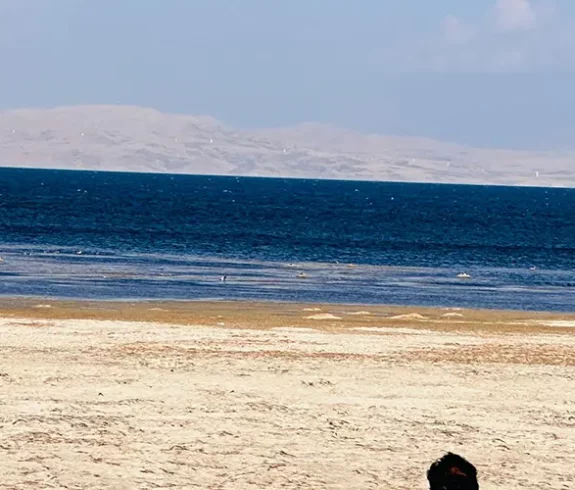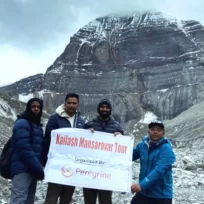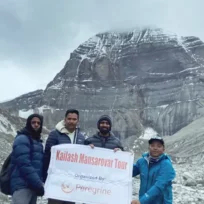Update on Kailash Mansarovar Yatra – March 2, 2025
According to the latest information from the authorized official of the Tibet Travel Bureau, Mount Kailash is expected to open for pilgrimage in April 2025. However, access will be limited to a restricted number of Indian passport holders.
At this moment, the exact cost of the Kailash Mansarovar Yatra cannot be confirmed. The final pricing is dependent on the Kailash Permit Fee, which the Foreign Ministry of China must officially declare. Until this fee is announced, no travel agency can confirm the total cost of the journey.
Based on current estimates, the approximate cost for the Kailash Mansarovar Yatra is expected to be around INR 2,00,000 per person. However, this is only an estimate, and the final cost may vary.
⚠️ Important Notice:
We strongly advise not to make any deposit payments to any travel agency at this stage, as the official pricing has not yet been declared. Any advance payments made before the official announcement could lead to complications.
We are closely monitoring updates from the authorities and will continue to provide accurate and timely information. Stay tuned for further updates.
For any inquiries, feel free to contact us.
Update: Kailash Yatra Restrictions
01 December 2024: We are pleased to share the latest updates from the Tibet Travel Bureau regarding the Kailash Mansarovar Yatra for Indian passport holders. As per the current information, there is a strong possibility that the Yatra will reopen in 2025.
Key Details:
- Estimated Costs:
- The Kailash portion of the trip is estimated at INR 1,80,000 per person.
- Kathmandu accommodation and sightseeing costs will be extra.
- Visa and Permit Process:
- Peregrine Treks has established an agency in India to assist with passport collection and visa processing.
- We recommend sending a copy of your passport to secure your spot now. Once we receive confirmation from the Chinese Embassy, we will request a deposit.
- Given the unpredictability of the Chinese government’s decisions, we aim to secure permits and visas in advance to guarantee departures.
- Group Size and Departures:
- We have scheduled fixed departures for full moon dates each month in 2025.
- A minimum group size of 20 people is required for standard pricing.
- The cost will be higher for smaller private groups (fewer than 20 participants).
Post-COVID Yatra Demand:
Since the Yatra has been closed to Indian passport holders following COVID-19, we anticipate a significant increase in demand for 2025. Early booking is highly recommended.
Next Steps:
To book your 2025 Kailash Mansarovar Yatra:
- Send a copy of your passport.
- Fill out the required form. Group Visa Form
- Contact us on WhatsApp at +9779851052413 with any questions or need any assistance.
We look forward to assisting you in making this sacred pilgrimage a reality.
30 October 2024: The issuance of Kailash permits for Indian passport holders by the China Indian Pilgrimage Service (CIPS) was halted due to political issues following the COVID-19 pandemic. However, recent developments, including improved India-China relations showcased at the BRICS Summit, indicate that the route may reopen by April 2025.
In preparation for this expected reopening, we are now accepting bookings for Indian passport holders. To reserve your spot, please provide a copy of your passport and a passport-sized photograph. The Tibet Travel Bureau is likely to issue the permits rather than CIPS, and since availability will be limited, bookings will be processed on a first-come, first-served basis.
The Kailash Mansarovar Yatra, a pilgrimage revered by millions across Hinduism, Buddhism, Jainism, and Bön, holds profound spiritual significance. Nestled in the majestic Himalayas of Tibet, Mount Kailash and the sacred Lake Mansarovar beckon devotees and adventurers alike. However, recent Kailash Yatra restrictions for Indian passport holders have raised concerns and questions. This article highlights the reasons behind these restrictions, the entry requirements, and alternative options for Indian pilgrims.

The Sacred Significance of Kailash Mansarovar
Kailash is believed to be the abode of Lord Shiva in Hinduism, Demchok (a wrathful manifestation of Buddha) in Buddhism, and the site of Ashtapada in Jainism. For Bön followers, it’s the axis mundi, where the earthly and heavenly realms intersect.
Lake Mansarovar, a pristine high-altitude lake, is revered as a source of spiritual purity and enlightenment. Its crystal-clear waters are said to cleanse the soul and grant blessings.
The Kailash Mansarovar Yatra is not merely a physical journey; it’s a transformative pilgrimage that tests one’s physical endurance and deepens spiritual devotion.

Entry Requirements for Kailash Mansarovar
To start the Kailash Yatra, travelers typically need the following documents:
- Chinese Visa: A standard visa is required for entry into China.
- Tibet Travel Permit: The Tibet Tourism Bureau issued this permit, which is mandatory for all foreign travelers visiting Tibet.
- Alien’s Travel Permit (PSB Permit): Issued by the Tibetan Local Public Security Bureau, this permit is necessary for traveling to restricted areas like Mount Kailash.
Kailash Yatra Restrictions for Indian Passport Holders: The Current Situation
Recent developments have seen the Tibetan Local Public Security Bureau halt issuing Alien Travel Permits (PSB permits) to Indian passport holders. This prevents Indian citizens from entering the Kailash region, even with valid Chinese visas and Tibet Travel Permits.
Reasons behind Kailash Yatra Restrictions for Indian Passport Holders
Political and Diplomatic Tensions
India and China’s relationship is complex, marked by ongoing border disputes, trade disagreements, and strategic alliances with other countries. These tensions have historically impacted travel and trade policies, potentially influencing the decision to restrict Indian citizens’ access to sensitive areas like Kailash.
Security Concerns
The Kailash region’s proximity to contentious border areas raises security concerns for the Chinese government. Monitoring and controlling access to this strategically significant area is a priority, especially during heightened bilateral tensions. Restricting entry for Indian nationals could be considered a measure to maintain tighter regional control and surveillance.
Health and Safety Regulations
While not the primary reason, the ongoing COVID-19 pandemic and China’s stringent health measures could contribute to travel restrictions. These precautions aim to protect local populations and prevent the virus’s spread.

Administrative and Policy Changes
Changes in local governance or administrative priorities within the Tibet Autonomous Region might lead to stricter regulations on travel permits, including the Kailash Yatra restrictions for Indian citizens. These shifts could reflect broader strategies to manage the region’s cultural and ecological preservation.
Cultural and Environmental Conservation
Kailash Mansarovar is a UNESCO World Heritage Site, and preserving its fragile ecosystem and cultural heritage is a priority. Limiting the number of visitors, particularly from populous countries like India, could be a measure to protect the region from over-tourism and environmental damage.
India-China Border Dispute
The India-China border dispute centers around the Line of Actual Control (LAC), an undefined boundary line that spans approximately 3,488 kilometers across the Himalayan region. The conflict primarily involves three areas: Aksai Chin in the western sector, Arunachal Pradesh (referred to as South Tibet by China) in the eastern sector, and several other locations in the middle sector. Aksai Chin, currently administered by China but claimed by India, became a significant point of contention after the Sino-Indian War of 1962.
India administers the region in Arunachal Pradesh, while China claims it as part of its territory. Differing perceptions of the LAC and occasional military skirmishes, such as the deadly clash in the Galwan Valley in 2020, exacerbate these territorial disputes. Diplomatic efforts and military negotiations continue, but the disputes remain a complex and sensitive issue impacting India-China relations.
Infrastructure and Crowding Concerns
Kailash Mansarovar, revered by millions of Hindu, Buddhist, Jain, and Bon pilgrims, attracts significant visitors annually, especially during peak pilgrimage seasons. However, the region’s remote and ecologically sensitive nature poses substantial challenges in accommodating large numbers of pilgrims. The infrastructure in the Kailash Mansarovar area, including roads, lodging facilities, medical services, and waste management systems, is limited and often strained by the influx of visitors. This inadequate infrastructure can lead to overcrowding, exacerbating the environment’s wear and tear, including the fragile ecosystems surrounding the sacred sites.
Moreover, the region’s high altitude and harsh climatic conditions further complicate the situation, as specialized medical facilities and acclimatization support are crucial for visitor safety. The Chinese government, therefore, faces the dual challenge of preserving the sanctity and environmental integrity of the area while managing the logistical demands of mass pilgrimage. As a result, restricting the number of pilgrims, mainly from populous countries like India, is necessary to prevent overburdening the local infrastructure and ensure a sustainable and respectful experience for all visitors. This approach aims to balance the spiritual aspirations of pilgrims with the practical realities of managing a remote and sensitive cultural heritage site.

Economic Considerations
From an economic perspective, the presence of Indian pilgrims at Kailash Mansarovar is often perceived as less financially beneficial than visitors from Western countries. Indian pilgrims, due to cultural practices and economic constraints, tend to spend less during their pilgrimage. They frequently bring provisions, including food and basic supplies, minimizing their dependence on local services and goods. This practice reduces their overall expenditure and limits their contribution to the local economy, particularly in areas like accommodation, dining, and retail, where international tourists generally spend more.
Consequently, from the standpoint of local businesses and the broader economic benefits to China, the influx of Indian pilgrims is seen as less lucrative. This financial dynamic may contribute to the preference for managing the number of Indian visitors, focusing instead on tourists from regions with higher spending power who are more likely to utilize and pay for local amenities, thereby generating more substantial economic benefits for the area.
Communication Gap and Diplomatic Efforts
The issue of Kailash Mansarovar Yatra restrictions for Indian passport holders highlights a significant communication gap between Indian and Chinese diplomatic channels. Effective dialogue between the two countries is crucial for addressing and resolving this sensitive issue, yet there appears to be insufficient direct communication at the diplomatic level. As a result, the concerns of Indian pilgrims and tour operators remain inadequately addressed.
Without bilateral solid engagement, Nepalese tourism associations such as the Nepal Association of Tour and Travel Agents (NATTA), the Trekking Agencies Association of Nepal (TAAN), and various Kailash tour operators have stepped in to lobby for a resolution. However, their influence is limited as they need more formal diplomatic authority to negotiate cross-border travel policies. These organizations mainly advocate for the tourism industry’s interests and facilitate alternative arrangements for pilgrims, such as mountain flights. However, their efforts are not a substitute for comprehensive diplomatic negotiations. More robust and coordinated diplomatic efforts are needed between India and China for a sustainable and mutually beneficial solution, with potential mediation or facilitation by international bodies or neighboring countries like Nepal.
Kailash Yatra Restrictions for Indian Passport Holders and Alternative Options
The Kailash Mansarovar Yatra is a sacred pilgrimage for many, but recent restrictions have impacted Indian passport holders. Because of COVID-19, the Chinese government has imposed restrictions on entry for Indian citizens. These restrictions have led to the need for alternative ways to experience the spiritual significance of Mount Kailash.
Alternative Option: Kailash Darshan via Mountain Flight
Given the current restrictions, a scenic mountain flight is one viable option for experiencing Kailash Mansarovar. This alternative allows pilgrims to view the majestic Mount Kailash from the air, providing a unique perspective of the sacred site.
Peregrine Treks and Tours offers Kailash Darshan Mountain flights departing from Nepalgunj, Nepal. The cost for this flight ranges between INR 35,000 to INR 40,000. This option provides an opportunity to experience the spiritual essence of Kailash while adhering to the current restrictions.
For more information or to book a seat on the Kailash Darshan Mountain Flight, contact Peregrine Treks and Tours. The company can be reached via email at [email protected] or WhatsApp at +9779851052413. It organizes group flights, ensuring a shared experience with fellow pilgrims.
Despite the Kailash Yatra restrictions for Indian passport holders, several alternative options allow Indian pilgrims to connect with the spiritual essence of Mount Kailash:
- Mountain Flights: Helicopter tours offer breathtaking aerial views of Mount Kailash and Lake Mansarovar. While not the same as a physical trek, they provide a unique perspective and a chance to seek blessings from the air.
- Virtual Pilgrimage: Virtual pilgrimages have emerged as a viable option in the digital age. These immersive online experiences allow devotees to explore the sacred sites, participate in virtual rituals, and connect with the spiritual energy of Kailash Mansarovar from the comfort of their homes.
- Alternative Treks: While access to the Kailash Parikrama is restricted, other treks in the Himalayan region offer similar spiritual and natural beauty. Consider exploring options like the Amarnath Yatra in India or treks in Nepal that offer stunning mountain vistas and a chance to connect with nature’s divine energy.
Conclusion
The Kailash Yatra restrictions for Indian passport holders are a complex issue with multiple underlying factors. While these restrictions may disappoint Indian pilgrims, alternative ways to experience the spiritual essence of Mount Kailash and Lake Mansarovar exist.
While exploring alternative pilgrimage options, you must stay updated on the latest travel advisories and regulations. The spirit of the Kailash Mansarovar Yatra lies in the devotion and the journey itself, and alternative paths can still offer profound spiritual experiences.







